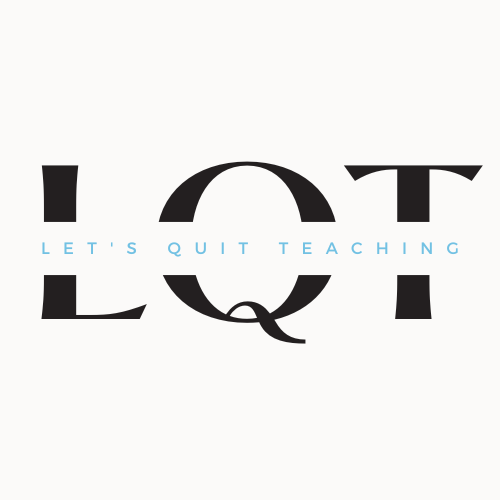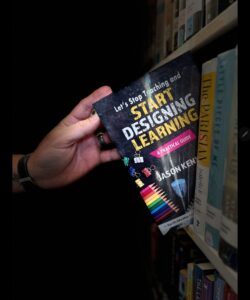Curiosity, far from being merely an intrinsic trait, is the cornerstone of effective learning-a dynamic force that can transform conventional classrooms into vibrant spaces of discovery and deep understanding. With an effect size of 0.74 or almost 2 years’ learning, curiosity can be a way we can get our kids on the hook while also getting them to dive into rich, authentic learning experiences across disciplines, thus nurturing an energized and inquisitive learning environment.
Picture a middle school math classroom where the day’s journey begins not with the usual essential question or learning target, but with a provocative question, “What if we wanted to fill this room, from floor to ceiling, with lime Jello? What would we need to know?” This initial curiosity not only seizes learners’ attention but also invites them to engage critically and creatively, paving the way for an immersive and meaningful educational experience.
Looking past the absurd and interesting image of a room completely filled with green Jello, think about all the learning potential packed into this question. Learners explore concepts of area. Then ratios with mixing Jello. We could also follow up with how much it would cost to make THAT much Jello. Learners could go on for hours with different mathematical challenges all centered around this one “silly question.” There’s a lot of power in that, after all Willy Wonka once said, “A little nonsense, now and then, is relished by the wisest men.”
Designing Engagement through Curiosity
When teachers introduce lessons with intriguing questions, they tap into learners’ innate curiosity, capturing and sustaining their interest. This transformation turns passive reception into a journey of exploration, where learners are not merely consumers of information but active participants in their learning. The intrinsic desire to seek answers and solve problems keeps learners mentally active, engaged, and ultimately leads to a more impactful and enjoyable learning experience.
Cultivating Critical Thinkers and Problem Solvers
By shifting from rote memorization to critical inquiry, learners are compelled to engage in higher-order thinking. This approach not only fosters analytical and synthesis skills but also enhances their problem-solving capabilities, preparing them for complex real-world challenges. Teachers who pose stimulating questions encourage learners to think independently, analyze situations, and apply their knowledge in various contexts, which are essential skills in both academic and everyday settings.
Promoting Collaboration and Active Participation
Integrating questioning into learning strategies naturally encourages collaboration and active participation among learners. When confronted with a challenging question, learners are motivated to exchange ideas, debate perspectives, and collaboratively construct knowledge. This interaction not only sharpens their communication skills but also builds a strong community of learners, enhancing social skills crucial for modern collaborative environments. Moreover, it empowers learners by giving them a voice in their educational process, boosting their confidence in expressing and defending their viewpoints.
Beyond Engagement: Cultivating a Culture of Inquiry
Utilizing questions as a fundamental element of educational practice transcends the traditional goal of making learning enjoyable. It fosters a culture of inquiry where learners are driven to ask, explore, and seek knowledge independently. This educational approach does not merely enhance classroom dynamics but also instills lifelong learning habits, empowering learners to take ownership of their learning journeys and transforming them into active agents of their education.
This week, integrate a question-based approach into a lesson. Choose a topic, formulate a compelling question, and observe how it transforms the classroom atmosphere and learner engagement. I’ve included a few from across subject areas that might help get you started:
English
“What kind of posts would the protagonist in our book make if they had an Instagram account?”
“What if there were no such things as adjectives? Describe your favorite pizza without them.”
“Pick a side character from our book. What would a story with them as the main character be like?”
Math
“What would we need to do to figure out which fast food chain gives you the most benefit for your money when ordering a large fry?”
“What’s the closest number to zero you can think of?”
“What if the number zero was never invented? How would that change things like computers or cell phones?”
Science
“What if plants could talk to us? How might this change farming or how we take care of plants?”
“What if there were no more bees?”
“What if water ran uphill? Would that change anything about our ecosystems?”
Social Studies
“What if the Industrial Revolution had happened in South America instead of Europe? How might the world look different?”
“If you were creating money for a new country, what would you use to make it valuable?”
“What would be good and bad about everyone in the world speaking the same language?”
By nurturing curiosity through strategic questioning, teachers can significantly enhance the learning experience, making it more engaging, thought-provoking, and enriching for learners. This practice not only supports academic growth but also prepares learners for a lifetime of learning and adaptation.


